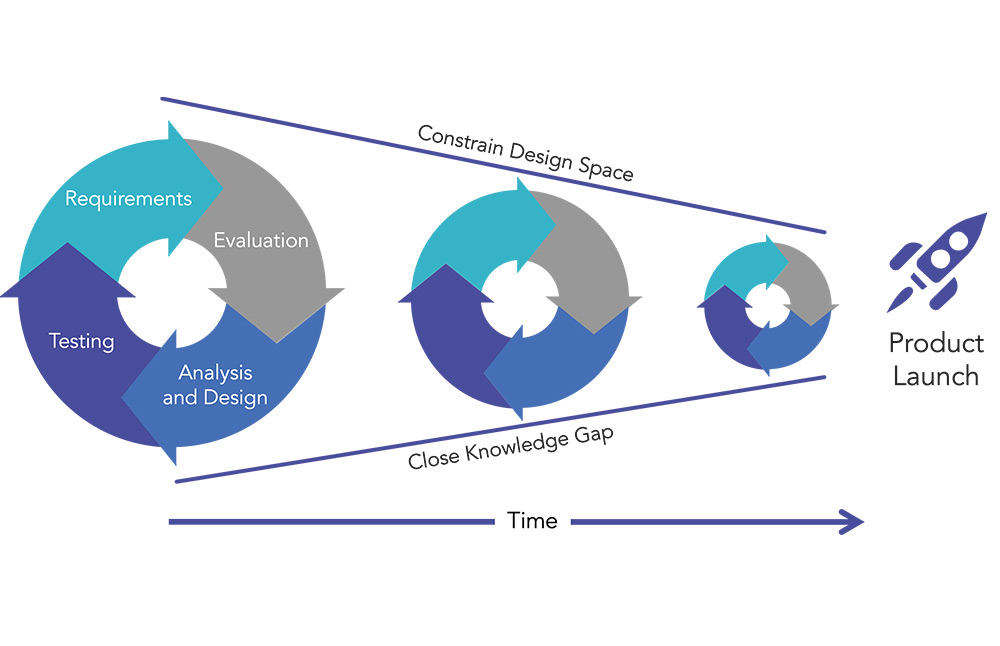Best Practices for Agile Hardware Product Realization
 Embracing Agile Methodologies in Hardware Product Development
Embracing Agile Methodologies in Hardware Product Development
The need to gain a competitive advantage by releasing products faster has driven the increasing adoption of agile methodologies in software development. However, due to the inherent differences between software and hardware products, modifications to the product realization process are necessary to effectively apply agile principles to hardware development.
For instance, in FDA-regulated products, design control requirements can make it challenging to completely eliminate the waterfall approach. A common strategy for these companies is to incorporate agile practices during the concept phase, where fewer design controls are required. Once the product development risk is substantially mitigated, they shift to a more waterfall-based approach during the design phase.
Traditional product development processes, such as the waterfall model, involve sequential design and testing activities. This approach can result in lengthy development cycles and costly, time-consuming rework if issues are discovered late in the process. In contrast, agile methodologies facilitate rapid design iteration and adaptation to changes.
Adapting Agile Principles for Hardware Product Realization
The Agile Manifesto highlights four key principles for software development, which can be adapted for hardware-based product development with some adjustments, such as lengthening the timing of sprints:
- Individuals and interactions over processes and tools.
- Working software over comprehensive documentation.
- Customer collaboration over contract negotiation.
- Responding to change over following a plan.
Based on decades of hands-on experience in hardware product development, we propose the following key elements for agile hardware product realization:
- A concurrent product development framework supported by a robust new product introduction (NPI) process and software-based business systems.
- Working hardware that includes critical validation testing, Design for Excellence (DfX) reviews, and appropriate documentation.
- Active technical program management to identify and mitigate risk.
- Customer collaboration with a preliminary contract in place.
- Iterative product development cycles within the framework of a strong NPI plan.
Five Best Practices for Agile Hardware Product Realization
A well-structured agile hardware development plan should gradually reduce the degrees of freedom for design changes as the project progresses toward product launch. The following best practices are crucial for successful agile hardware product realization:
- Develop a minimum viable product (MVP): Focus on the essential features required for the initial product launch, avoiding unnecessary complexity and cost. Extra features can be added later after market validation using a strategic product roadmap.
- Understand and mitigate risks early: Identify potential risks early in the development process and establish strategies to address them.
- Incorporate DfX principles: Apply DfX principles to optimize product performance, manufacturability, and reliability.
- Leverage simulation tools and rapid prototyping: Utilize these tools to accelerate design iterations and reduce development time.
- Deploy scalable business systems and processes: Implement systems and processes that can adapt to changing requirements and scale as the business grows.
Conclusion
In today’s fast-paced business environment, agile hardware product realization is crucial for companies seeking a competitive advantage. By adopting agile methodologies and incorporating the best practices outlined above, companies can reduce costs, mitigate risks, and bring the right product to market faster. Embrace agile hardware product realization to successfully navigate the complex process of taking your product from concept to scale.
Discover more practical insights here about taking your hardware product from concept to scale. Find expert advice and tools to help you navigate the complex process of bringing your product to market, drawing from over 30 years of high-tech new product introduction experience.
Further Reading
“Agile Hardware Product Realization: Mastering the Journey from Concept to Scale” by Michael Keer
7 Tips to Establish An Agile Product Development Framework
Applying Agile Methodologies to Hardware Product Development



